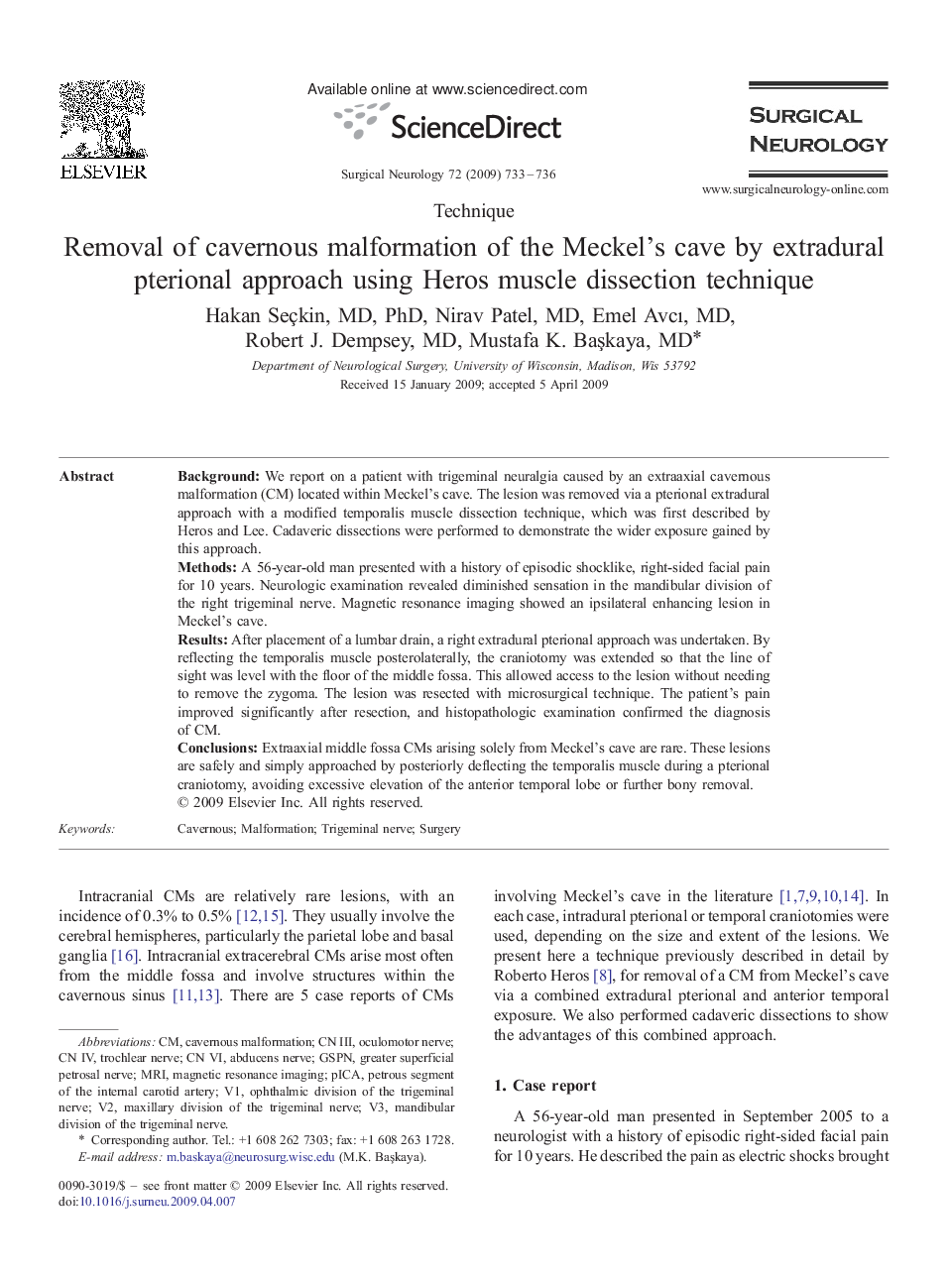| Article ID | Journal | Published Year | Pages | File Type |
|---|---|---|---|---|
| 3092058 | Surgical Neurology | 2009 | 4 Pages |
BackgroundWe report on a patient with trigeminal neuralgia caused by an extraaxial cavernous malformation (CM) located within Meckel's cave. The lesion was removed via a pterional extradural approach with a modified temporalis muscle dissection technique, which was first described by Heros and Lee. Cadaveric dissections were performed to demonstrate the wider exposure gained by this approach.MethodsA 56-year-old man presented with a history of episodic shocklike, right-sided facial pain for 10 years. Neurologic examination revealed diminished sensation in the mandibular division of the right trigeminal nerve. Magnetic resonance imaging showed an ipsilateral enhancing lesion in Meckel's cave.ResultsAfter placement of a lumbar drain, a right extradural pterional approach was undertaken. By reflecting the temporalis muscle posterolaterally, the craniotomy was extended so that the line of sight was level with the floor of the middle fossa. This allowed access to the lesion without needing to remove the zygoma. The lesion was resected with microsurgical technique. The patient's pain improved significantly after resection, and histopathologic examination confirmed the diagnosis of CM.ConclusionsExtraaxial middle fossa CMs arising solely from Meckel's cave are rare. These lesions are safely and simply approached by posteriorly deflecting the temporalis muscle during a pterional craniotomy, avoiding excessive elevation of the anterior temporal lobe or further bony removal.
